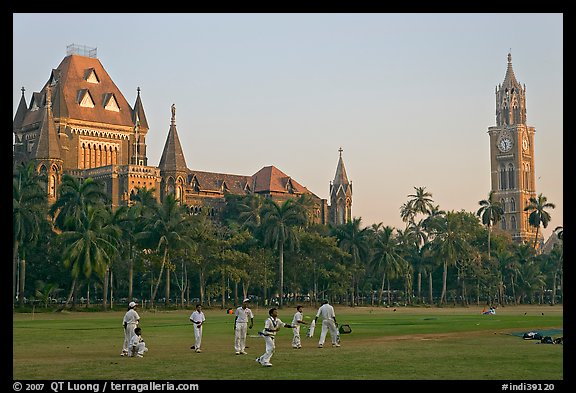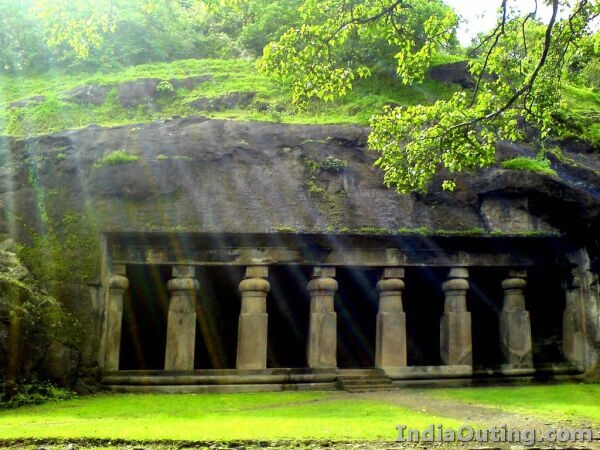INTRODUCTION / HISTORY OF MUMBAI:
Congratulations, you are going to India the Fall Semester! More specifically to the University of Mumbai, in Mumbai. Mumbai is located on the southwestern coast of India, a port city. India is one of the most culturally rich counties in the world. Mumbai used to be called Bombay, and was changed in 1995 cutting its ties with the English (Beam). It is the country’s most populous city, as well as the most densely populated cities in the world with just about 10 million residents (Raghavan). In comparison, according to the New York City census, the city is the most populated in the United states at just over 8 million. Mumbai is the country’s financial hub, however with mass production comes some consequences such as pollution and overcrowding (Raghavan).
History of University of Mumbai/ Corse Work:
The University of Mumbai was previously known as The University of Bombay, and is one of the oldest universities in India established in 1857. The university has the undergraduate, master’s, and doctoral levels. It now has a Five Star status granted by the National Assessment and Accreditation Council. (University of Mumbai).
At the University of Mumbai, you will be studying under the Faculty of Fine Arts. TO take advantage of a city referred to as Bollywood, the courses will be centered around performance art and its construction. The following are the courses that you will be taking during the semester:
- Modern India Drama
- Study of History of MID
- Study of MID trends in playwriting as well as presentation in Hindi, Marathi, Bengali and other languages.
- Analysis of works of contemporary theatre directors and writers.
- Stage Craft and Theater Technique: Set Design
- Basic concept , principles and methods of scenic design.
- Stage technique and set construction.
- Basic knowledge of technical drawing and sketching.
- Kinds of sets.
- Designing sets model making and set execution.
- Play Writing
- The Academy of Theatre Arts will provide an insight into play writing as a basic aspect of theatre practice.
- Students are exposed to the basics of various types of playwriting.
- Students are exposed to the work of master playwrights.
- Workshop will be conducted on Film & TV Acting and Film appreciation
http://mu.ac.in/portal/academy-of-theatre-artsdramatic-arts/
Culture of Mumbai:
Mumbai is a culturally diverse city with a very fast pace way of life. The official language of Mumbai is Marathi, however being a port city, there are other languages spoken, most importantly English. Even though English is widely spoken, it is advised to get a translation dictionary for hard times. The food available it of a wide variety, their Indian food is very diverse, however they have western foods to include a fast food Chinese restaurant only a few blocks from campus. The most common faiths in the city are Hindus, Muslims, Christians, Jains, and Buddhist, each of which have very different beliefs but live together in the city. The city is known for its Bollywood industry including music, film, and dance.
There are many festivals that are held in Mumbai, however for the dates that you are there, the festival of lights, or Diwali will be celebrated. The festival if filled with legends and stories of Hindu religious scriptures.
The central theme of the legends point out the victory of good over the evil. The light aspect of the lights is that the lighting of the lamp is a means to understand and reflect the significance of the five days of celebration each day consisting of different celebrations.
Important City Info:
Money:
Mumbai uses the currency Rupee. The exchange rate is 1 US dollar = 67.94 INR. Though this may seem like a big difference, don’t go spending all your money.
Safety/ Medical:
There are two hospitals in Mumbai: Bombay Hospital and Breach Candy Hospital.
To travel to India the following vaccinations are typhoid, Japanese encephalitis, hepatitis A, hepatitis B, rabies, polio, measles, mumps and rubella (MMR) and influenza.
You must apply for a visa, which will be organized through the school. The United states embassy is located:
Transportation:
The mode of transportation in Mumbai is walking, metro or taxi. The city is so populous that during their ‘rush hour’ it is almost impossible to get around efficiently. If you want to go explore, it is highly advised to avoid the commuting hours.
Travel:
Gateway of India: This is a stone arch built in 1924 on the waterfront. It was built to commemorate the arrival of King George V. This is also the departure ares to get to the next site, the Elephanta Caves.

Elephanta Caves: This is a UNESCO world site located on an island in the Sea of Oman. It is a collection of rock art linked to the cult of Shiva.

Sanjay Gandhi National Park: This national park is a nature preserve with tours, nature trails, and lakes. There you can see big cats, take a pedal boat for a scenic ride, ride a tour train, and see the Kanheri Caves.

Works Cited:
University of Mumbai. N.p., n.d. Web. 05 Feb. 2017.
Beam, Christopher. “How Bombay became Mumbai.” Slate Magazine. N.p., 12 July 2006. Web. 05 Feb. 2017.
“Culture of Mumbai.” Culture of Mumbai – Language, Food, Tradition and Heritage. N.p., n.d. Web. 05 Feb. 2017.
“Culture of Mumbai.” Culture of Mumbai – Language, Food, Tradition and Heritage. N.p., n.d. Web. 05 Feb. 2017.
“Current and Projected Populations.” NYC Population. N.p., n.d. Web. 05 Feb. 2017.
“Diwali.” Diwali – Deepawali,Diwali Gifts India,Diwali Festival. N.p., n.d. Web. 05 Feb. 2017.
Raghavan, Chakravarthi. “Mumbai.” Encyclopædia Britannica. Encyclopædia Britannica, inc., 27 June 2016. Web. 05 Feb. 2017.
Leave a Reply